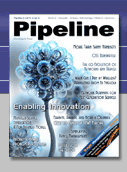
article page
| 1
| 2
| 3
| 4
| 5
| 6
| 7
| 8
|
families are connected to common branches back to the network. This may represent network topology, but it does not represent device topology. Devices can of course connect to the network, but just as easily, today's devices can connect directly to each other. The startup company m2mi just released an application for the Apple iPhone called icrowdsurf. It uses the iPhone's built in WiFi to find and connect peer-to-peer to other iPhones within WiFi distance of each other – completely bypassing any network services. There is no service provider network in the center of things. Perhaps then there is a more useful way to conceptualize this trend of device proliferation.
Device management may well be the biggest future opportunity available to the Service Provider. The advent of Over The Top Services shows us that even as we move into a world where everything is connected to the network, the importance and the value of the network is under technical and financial
|
|
We must understand that there will be primary devices and satellite devices engaged in small, personal network clusters where only the primary device connects to the network, and to network management |
|


session were quite strong. According to Chris Ballard, who heads this TMForum Device Management program, next on their agenda is a unifying Framework for Device Management, a parallel deliverable to the Service Delivery Framework which attempts to link the various Service Delivery Platforms of IMS and SIP vendors. (See Chris' article in this issue: "Simplifying Device Management.") But this team discovered it has bitten off a difficult task. The scope of the device world greatly exceeds the scope of SDP vendors. There is, however something, seductive
|
|
|
|

attack. Many operators and the TM Forum have looked to media delivery as an answer. Yet they may have a much greater opportunity staring them in the face: the proliferation of network connected devices, often called pervasive computing. Yet the multiplication of connected devices is also the service providers' biggest opportunity to fail, as the same forces attacking traditional telecom services via OTT services, are embarking on substantial device OS and service development projects. Service Providers cannot meet this threat by applying "business as usual" thinking and current product strategy.
Some members of the TM Forum understand this. They launched the Device Management initiative. They have made a good start and gathered some very forward thinking team members. The presentations at the Management World Nice Device Management
|
|

about creating this grand vision. It is a rich and challenging intellectual task, like the search for unified field theorem. There is a haunting feeling that it can (and must) all be put together.
Why is this so big a job? Just look at the many classes of devices to be managed and the many different architectures to be assimilated and the many organizations who might contribute. The TMForum has made a good start on this with the "End-User Device Management - Industry Groups Positioning Document."
Too Much of a Good Thing
The TMF initiative initially is concerned with the major new devices just now being connected to the network. First, there are mobile phones. This is a well-studied
article page
| 1
| 2
| 3
| 4
| 5
| 6
| 7
| 8
| |
|





